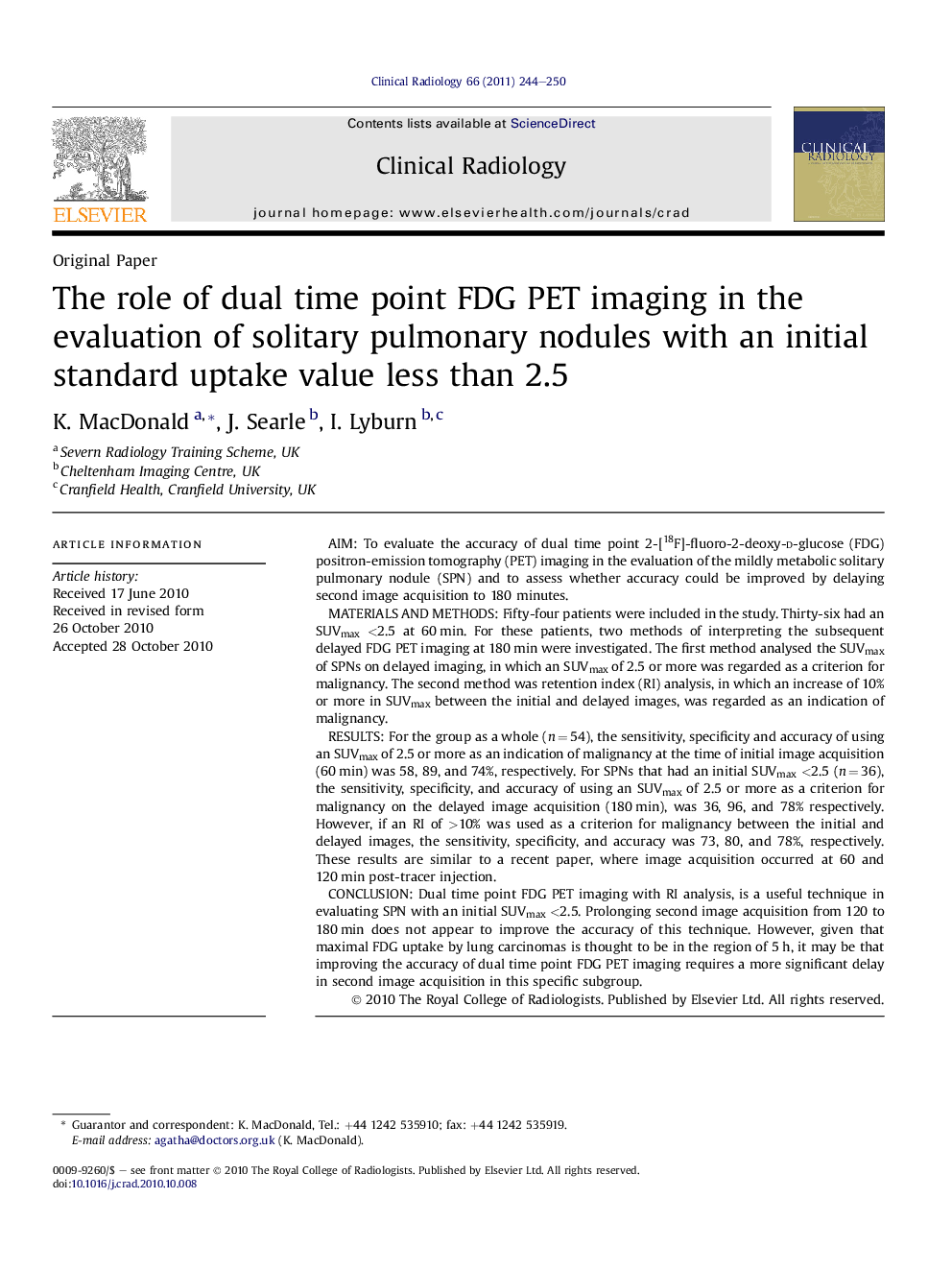| Article ID | Journal | Published Year | Pages | File Type |
|---|---|---|---|---|
| 6191059 | Clinical Radiology | 2011 | 7 Pages |
AimTo evaluate the accuracy of dual time point 2-[18F]-fluoro-2-deoxy-d-glucose (FDG) positron-emission tomography (PET) imaging in the evaluation of the mildly metabolic solitary pulmonary nodule (SPN) and to assess whether accuracy could be improved by delaying second image acquisition to 180 minutes.Materials and methodsFifty-four patients were included in the study. Thirty-six had an SUVmax <2.5 at 60 min. For these patients, two methods of interpreting the subsequent delayed FDG PET imaging at 180 min were investigated. The first method analysed the SUVmax of SPNs on delayed imaging, in which an SUVmax of 2.5 or more was regarded as a criterion for malignancy. The second method was retention index (RI) analysis, in which an increase of 10% or more in SUVmax between the initial and delayed images, was regarded as an indication of malignancy.ResultsFor the group as a whole (n = 54), the sensitivity, specificity and accuracy of using an SUVmax of 2.5 or more as an indication of malignancy at the time of initial image acquisition (60 min) was 58, 89, and 74%, respectively. For SPNs that had an initial SUVmax <2.5 (n = 36), the sensitivity, specificity, and accuracy of using an SUVmax of 2.5 or more as a criterion for malignancy on the delayed image acquisition (180 min), was 36, 96, and 78% respectively. However, if an RI of >10% was used as a criterion for malignancy between the initial and delayed images, the sensitivity, specificity, and accuracy was 73, 80, and 78%, respectively. These results are similar to a recent paper, where image acquisition occurred at 60 and 120 min post-tracer injection.ConclusionDual time point FDG PET imaging with RI analysis, is a useful technique in evaluating SPN with an initial SUVmax <2.5. Prolonging second image acquisition from 120 to 180 min does not appear to improve the accuracy of this technique. However, given that maximal FDG uptake by lung carcinomas is thought to be in the region of 5 h, it may be that improving the accuracy of dual time point FDG PET imaging requires a more significant delay in second image acquisition in this specific subgroup.
